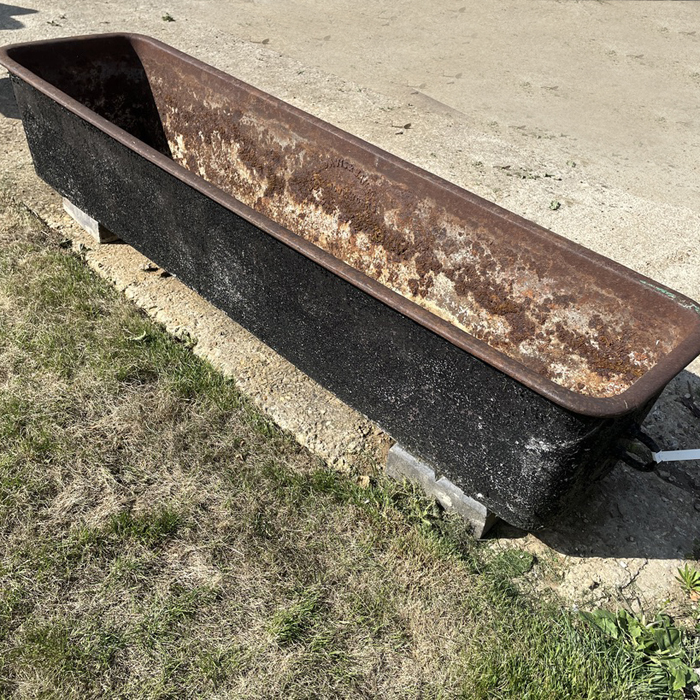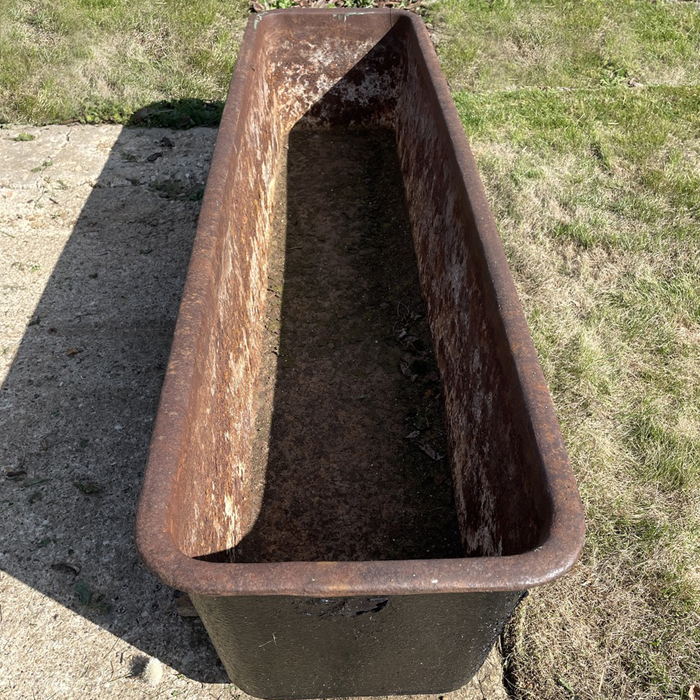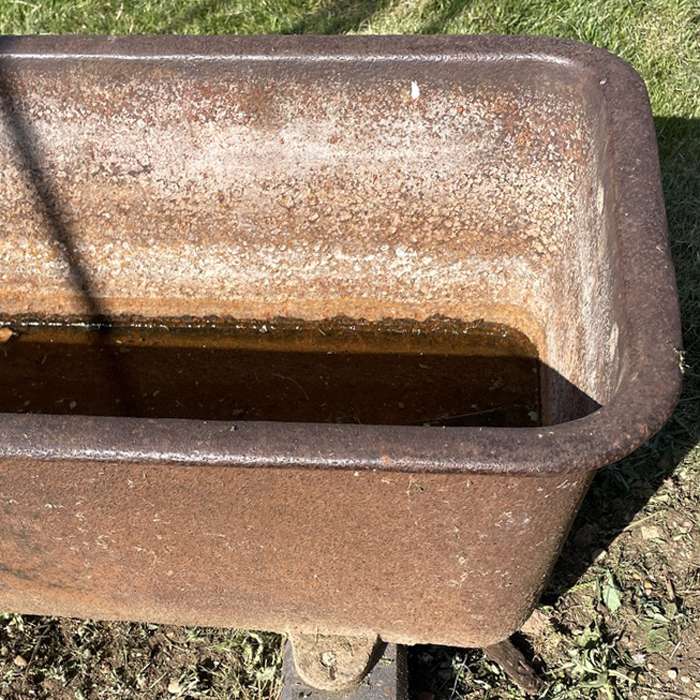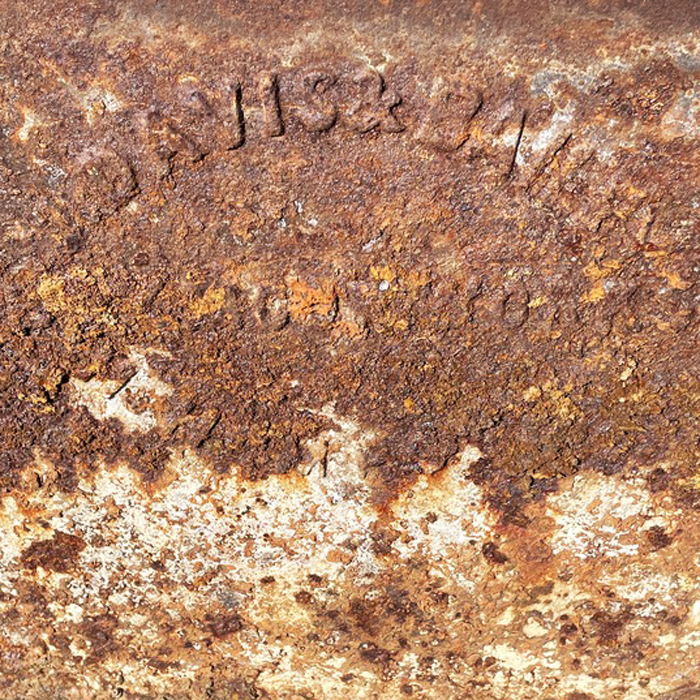One of two English cast iron watering troughs
the rectangular trough with an inverted rim, a tethering hoop to one short end and outset lugs for fixing, singular drainage hole, bearing the maker's stamp to the interior, a crack to the rim
£825
In stock
An Excerpt by Roger Hands from: “Men of Iron” published by the Dacorum Heritage Trust.
“Boxmoor Iron Works – Messrs Davis and Bailey
James Davis was the son of Richard Davis of Great Missenden and a Miss Wren, a possible descendent of the architect Christopher Wren, who were married at Swallowfield in 1810. By the year 1855, James was established as an iron founder in Marlowes, with a family of one son, William Nash, and three daughters, Elizabeth, Matilda and Emma. The business developed quickly in the field of agricultural implements and William travelled extensively as a representative of Davis and Son, until his untimely death in 1871, at the age of 27. Matilda married a Mr.Lane and Emma married Joe Bailey of Chambersbury House.
By 1886, the business was known as Davis and Lane. James Lane lived at Parkhill, Hemel Hempstead, but he emigrated to New Zealand and the company soon became Davis and Bailey. It is believed that the foundry was burnt down at an early stage of its history, probably before 1870, and then later rebuilt.
The firm were specialists in their field, enjoying an enviable reputation for good products, and the provision of a repair service second to none. Indeed, it was a maxim of the firm that no job was refused and every effort was to be made to keep the customers’ machinery working.
They were prominent employers in the town, in the main using old type craftsmen. At one time, almost all the men of working age residing in Bridge Street were employed by the firm and the payroll carried the names of many old Hemel families.
The works were situated in a spot roughly where Bank Court is today, and consisted of a large yard fronting on to Marlowes and running back to the river Gade.
Situated at the north corner of the frontage was a rather large house in which resided the Works Manager, Benjamin Bailey, a bachelor cared for by a housekeeper. Joe Bailey continued to live at Chambersbury House, Leverstock Green. The works also consisted of a large open yard, along the sides of which were carpentry, blacksmiths and machine shops. Along the bottom of the yard bordering the river was a large foundry which housed a smelting furnace. This foundry looked like a museum, the walls being festooned with wooden patterns and templates. The yard also contained a boiler house and a small office.
By 1929, the work force was made up of about thirty men and boys, and one girl. The carpenters’ shop at that time was presided over by Jim Sells, a dour old gentleman, his staff consisting of Charlie Puddephat, Fred Picton and Jack Beasley. The machine shop was the domain of the Walker family, Jim, his brother Syd and Syd’s son. The foundry was in the capable hands of Will Freeman, with Frank Davis, Jesse Potten and Bert Page as his assistants.
The firm was seldom short of work and during haytime, harvest and autumn ploughing, things could become hectic, the foundry in particular working long hours to supply the demand for ploughshares. Many ploughmen visited the works to have the ploughs set to their own requirements. The firm’s ability to repair and supply on demand is mentioned by Tony Harman of Whelpley Hill in his very popular book, ‘Seventy Summers’.
The success of the firm was largely due to it being under the supervision of Joseph Bailey, who, being a farmer on a large scale himself, was conversant with the problems that faced his customers. He farmed land extending from Catsdell to Bunkers Lane. His farms consisted of High Street Farm, supervised by George Bailey, Westwick Row Farm run by Hugh Bailey and Bunkers Farm, where Mr. Dollimore’s father was foreman.
After the Second World War, with the advent of more sophisticated machinery, the firm was gradually run down and finally closed with Mr. Bailey’s death in 1949. The beam engine was taken into store at the Science Museum.
It is quite surprising that so little information is generally available for such a substantial local business that played so prominent a part in the history of Hemel Hempstead for nearly one hundred years.”




